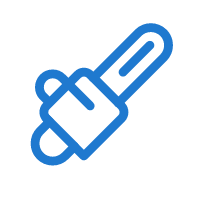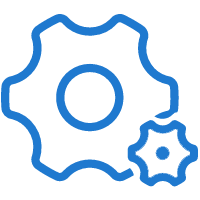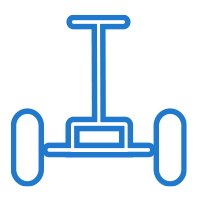Professionally Customize Automobile Motor
Recommended Supporting Suppliers for
Global First-tier OEMs
Industrial Product Supporting Capacity
Low Noise,High Quality,Safety, Low Energy Consumption
Industry Innovations
Dishwasher Dispenser Series
- Intelligent tips for a comfortable home life
- Reliable dispensing for the ultimate experience
- Highly adaptable to meet the diverse needs of users
- Modular design for easy operation
New Products for Automotive Air Conditioning Applications
Automotive Air Damper / Motorised Air Vent Actuator
- Miniaturised solutions, Smaller size, Meet the demand for lightweight automotive products
- Domestic chip, Stable supply, Maintain a certain price advantage
- Consistent size and performance, Can replace the imported product programme

Founded in 1993
Stock code 300660

Qualification

Professional customization
Annual production:200 million motors+

500+
World famous brand partner
Products and Applications
-
Home Appliance Market
Committed to providing innovative solutions for the global home appliance industry
- Leading brand in global air conditioning sweep motor market
- A global leader in washing machine drainage systems
- Global Refrigerator lce Water System Solution Provider
Home Appliance Market
Committed to providing innovative solutions for the global home appliance industry
- Customer Cases




- Specific Classfication
 Air Conditioner
Air Conditioner Refrigerator
Refrigerator Washing Machine
Washing Machine Kitchen & Bathroom
Kitchen & Bathroom Small Home Appliances
Small Home Appliances
-
Auto Parts
Provide motor and mechatronic components for automobiles
- Product advantages of stepper motors for HUD
- Large-scale automotive water pump production capacity
- Automotive air conditioning system solution capabilities
Auto Parts
Provide motor and mechatronic components for automobiles
- Customer Cases




- Specific Classfication
 Air Conditioning System
Air Conditioning System Thermal Management
Thermal Management Intelligent Driving
Intelligent Driving Intake & Exhaust System
Intake & Exhaust System Body Control
Body Control Braking System
Braking System
-
Industrial Control
Provide cost-effective motor and component products in the industrial field
- First-tier brand suppliers in the valve control market
- Domestic security monitoring head enterprise supplier
- Multiple series of products meet different application scenarios
Industrial Control
Provide cost-effective motor and component products in the industrial field
- Customer Cases




- Specific Classfication
 Valve Control
Valve Control OA Finances
OA Finances Garden Tools
Garden Tools Industrial Equipment
Industrial Equipment Security Monitoring
Security Monitoring Robot
Robot
-
Sports Health
Provide high-quality motors for sports equipment and medical equipment industries
- High-end sports equipment main drive motor supplier
- First-tier brand suppliers in the medical device industry
- Ability to provide solutions such as smart furniture
Sports Health
Provide high-quality motors for sports equipment and medical equipment industries
- Customer Cases




- Specific Classfication
 Sports Equipment
Sports Equipment Medical Instruments
Medical Instruments Game Entertainment
Game Entertainment Smart Home
Smart Home
Outer Diameter 20-50mm
Outer Diameter 6.5-60mm
Outer Diameter 35-60mm
Motors for Valve Control
Full Range of Brushless Types
Various Options Available
DC/AC Programme
Washing Machine Drain Pumps
Automotive Heat Management Pumps
Motors for Valve Control
New Products
- The industrial motor on the market is mainly AC high energy consumption, and the application of permanent magnet motor is less.
Rare Earth Removal Efficient
Permanent Magnet Synchronous Motor
More efficient and energy-saving than same-priced asynchronous motor.
Trending for Industrial Motor Development
- High efficiency, energy saving and green development
- Intelligent and integration

Self-developed Stator Soft Magnetic Material
- Strong plasticity, simple manufacturing process
- Energy saving, environmental protection, high strength
Self-developed Magnetic Rotor Material
- High dimensional stability
- Double permeability design, improve the motor full frequency high efficiency band
Integrated Design
- Small size, light weight
- Intelligent, low noise
- Domestic dishwasher penetration rate is low, the market demand has continued to increase in recent years, the market outlook is large.
Industry Innovative
Intelligent Dishwasher Dispenser
Multiple options for different types of detergents.
Dishwasher Development Trend
- High-end functional requirements
- Wider market prospects for embedded / single-use
- Dishwasher detergents towards integration and liquidisation

Highly Adaptable
- Four options to choose from
- Meets most of the dishwasher detergent dispensing needs on the market
Reliable Detergent Dispensing
- Reliable, active pushing out of the dishwasher block
- Liquid filling pump with good liquid viscosity adaptability
Modular Design
- Modular design, simple structure
- Plug-in installation of the dosing pump
- Increasing demand for automotive comfort, automotive air conditioning market trends towards electrification and intelligence.
Automotive Air Damper / Motorised Air Vent Actuator
Miniaturised solutions for lightweight requirements.
Automotive Air Conditioning Air Vents Market Trends
- Automotive air conditioning air vents electrification, intelligence
- Large air outlet area, wide-angle wind sweeping
- Require high efficiency and good stability of air vents

Product Lightweighting
- Miniaturised solutions with smaller dimensions
- Meet the demand for lightweight automotive products
Stable Supply
- Domestic chip, can provide stable supply
- Maintain a certain price advantage
Substitute for Imported Products
- Maintain the same size and performance
- There can be a substitute for imported products programme
Client Cooperation

Providing you with a full range of CUSTOMISED SERVICES

Relying on the application advantages and customer base in the drainage system of washing machines, Leili continues to meet the needs of new projects of customers and provide customized solutions for the functional requirements of high-end washing machines. After years of research and development, the automatic feeding system for washing machines has been mass-produced by customers such as Little Swan and Whirlpool.

The application of Leili motor in refrigerator products is mainly synchronous motor. In recent years, the customer’s demand for refrigerator ice-making function, Leili motor and the customer close communication, collaborative research and development of refrigerator ice and water system components, for the customer to produce high-end refrigerator to provide assistance. At present, the refrigerator component products have been developed in series for different application scenarios of different customers such as Whirlpool, Midea and GE.
News Center
LEILI is excited to participate in the upcoming 137th Canton Fair, scheduled from April 15th to April 19th at the Canton Fair Complex, No.382, Yuejiang Zhong Road, Guangzhou. As a global leader in motion control and motor solutions, LEILI is excited to meet customers, partners, and visitors from around the world during this premier international trade event.
This spring session of the Canton Fair, known as China’s largest and most comprehensive trade fair, presents an invaluable opportunity for industry professionals to explore the latest trends, forge new connections, and discover cutting-edge products. At LEILI, we are proud to be part of this dynamic platform once again.
Visit LEILI at Booth No. 19.2E35-36, 19.2F13-14
We warmly welcome all attendees to visit us at our booth No. 19.2E35-36 and 19.2F13-14, where we will showcase our full portfolio of innovative motor products and intelligent drive systems. From precision micro motors to integrated motion control solutions, LEILI’s products are widely applied in smart home appliances, medical equipment, industrial automation, and automotive systems.
Visitors will have the chance to:
- Examine the introduction of new products with cutting-edge features and increased effectiveness.
- Experience live demonstrations of our motor solutions in action
- Engage with our professional team to discuss custom solutions for your application needs
- Discover LEILI’s latest R&D advancements in brushless motors, stepper motors, servo systems, and more
With over two decades of expertise and a strong commitment to innovation, LEILI continues to lead the way in delivering reliable, energy-efficient, and intelligent motor solutions to clients around the globe.
What to Expect at LEILI’s Booth
Our booth will highlight LEILI’s core technologies and product advantages. You’ll see:
- High-performance BLDC motors designed for smooth operation and high torque output
- Stepper motors and gear motors developed for precise positioning and quiet operation
- Advanced servo drive systems offering superior control for industrial automation
- Customized motor assemblies tailored to meet specific customer requirements
Our engineering and sales teams will be on-site, ready to provide in-depth technical support and one-on-one consultation. Whether you’re seeking a standard model or a fully customized solution, LEILI offers the flexibility and expertise to support your unique project.
Let’s Connect and Innovate Together
The Canton Fair is more than an exhibition — it’s a global meeting point for ideas, technology, and partnerships. At LEILI, we believe in the power of collaboration to create smarter and more sustainable motion solutions. We look forward to sharing our vision and learning from your insights.
Mark your calendar:
📅 Date: April 15–19, 2025
📍 Venue: Canton Fair Complex, No.382 Yuejiang Zhong Road, Guangzhou
🧭 Booth: 19.2E35-36, 19.2F13-14
Welcome to our booth — let’s shape the future of motion together!

A brushless direct current (DC) motor, also known as a synchronous electric motor, is driven by DC electricity instead of a mechanical commutation system. Brushless DC motors have high efficiency and reliability, help lower acoustic noise, and offer dynamic response, high speed range, and long durability, which are among the key features expected to leverage the brushless DC motor market growth.
Request For Sample Copy of this Research Report:https://www.coherentmarketinsights.com/insight/request-sample/1438
The higher efficiency of brushless DC motors in comparison with other induction or magnetic motors is driving the growth of the brushless DC motors market. Brushless DC motors are more efficient than their brushed DC counterparts, as it is associated with lower mechanical wear outs, thus lowering maintenance costs.
Brushless motor operates at low temperatures, require minimum maintenance, are thermally resistant, and remove any threat of sparks. This, in turn, has increased the demand for brushless motors over other types. Integration of sensor-less controls in brushless DC motors helps boost the durability and reliability of the product, in turn decreases the number of mechanical misalignment and electrical connections and reduces the weight and size of the product. The demand for the sensor-less controls from the industrial machinery has increased considerably due to its low cost and robust motor drives.
Among end users, the industrial automation equipment segment held the largest market share in the brushless DC motors market due to the growing demand for hybrid and electric cars. According to the International Energy Agency, in 2016, electric car sales were over 750 thousand worldwide. The consumer goods segment is rapidly growing due to increasing demand for heating, ventilation, and air conditioning (HVAC) technology, which in turn is increasing the demand for brushless DC motors.
Asia Pacific held the large brushless DC motors market share due to the rising production of electric cars and increasing demand for consumer electronics. According to the International Energy Agency, in 2016, China held the largest market share in the electric cars market, accounting for over 40% of the global electric cars sold.
The market in North America is expected to witness the fastest growth due to the growing demand for extremely sophisticated medical devices. For example, the development of positive airway pressure (PAP) breathing apparatus for the treatment of sleep apnea. This device, which helps patients in breathing also employs a brushless DC motor to power the blower fan.
Key players operating in the brushless DC motors market include Johnson Electric, Ametek, MinebeaMitsumi Inc., Allied Motion Technologies Inc., Maxon Motor AG, Emerson Electric Corporation, ABB, Nidec Corporation, and ARC Systems.
For More Information: https://www.coherentmarketinsights.com/ongoing-insight/brushless-dc-motors-market-1438
Another year of glorious blossoms in spring and solid fruits in autumn, let us forge ahead and open a new chapter. On November 26, 2024, the signing ceremony of the cooperation agreement “Research and Development of Six-Phase Brushless Motor and Controller with Torque Feedback” between Changzhou Leili Motor Technology Co., Ltd., a subsidiary of Jiangsu Leili, and Southeast University was successfully held at Motor Technology. Liu Xiaoyu, chairman of the Science and Technology Association of Changzhou Xinbei District and member of the Party Group of the District Science and Technology Office; Huang Yunkai, member of the Party Committee and deputy dean of the College of Electrical Engineering of Southeast University; and Jiang Zheng, deputy director of Longhutang Street of the district, attended the event.

At the ceremony, Su Da, Director General of Engine Technology, welcomed and thanked the visitors and stated that the signing of this industry-university research cooperation agreement marks a milestone in the more than 10 years of cooperation between the two sides, which will further boost cooperation. Engine Technology will continue to adhere to the principles of open cooperation and mutual benefit, and will explore new solutions and models with Southeast University in talent development, scientific research, and the transformation of achievements, jointly exploring the development of cutting-edge fields.
Huang Yunkai, Vice President of the College of Electrical Engineering at Southeast University, introduced the cooperation project and the university’s current research direction and held in-depth discussions with Mr. Su and the technical team. Liu Xiaoyu, President of the District Science and Technology Association, praised the cooperation between the College of Electrical Engineering and Southeast University. He noted that the government will provide policy support and guidance, and expressed his hope that the three parties—the college, the district, and the enterprise—will cooperate and promote technological innovation to a higher level. After the ceremony, Mr. Su led a delegation of guests to visit the company’s exhibition hall, introducing the company’s mature and outstanding products one by one and sharing future development plans.

We firmly believe that through close collaboration and collaborative efforts between schools and businesses, they can quickly meet the operational needs of intelligent driving in the new energy market and promote the development of new-level productivity. At the same time, both sides will actively explore new models of deep integration between industry, academia, and research, seeking to share resources and gain complementary advantages by cultivating high-quality innovative talent and creating high-level scientific research platforms, thereby boosting the competitiveness and social influence of enterprises.
Permanent Magnet Synchronous Motors are used in EVs, robotics, automation, HVAC, compressors, and high-speed systems for their high efficiency, rapid response, precise control, and compact design.
However, despite their advantages, PMSMs commonly face bearing noise and vibration problems, which directly affect motor performance, lifetime, and user experience.

Why Bearing Noise Matters in PMSM
Bearings are responsible for supporting the rotor, reducing friction, enabling smooth rotation, and maintaining correct alignment. In PMSMs, which often operate at high speeds and require precise rotor positioning for synchronous operation, bearings play a critical role in:
- Rotor stability
- Torque smoothness
- Minimizing friction losses
- Preventing demagnetization from mechanical collisions
- Extending motor lifetime
Any abnormality in bearing behavior — such as noise, vibration, or overheating — leads to:
- Increased energy consumption
- Loss of efficiency
- Reduced accuracy in servo systems
- Higher acoustic noise (unacceptable for EVs and home appliances)
- Premature motor failure
Therefore, diagnosing bearing noise early and implementing corrective solutions is essential for PMSM reliability and performance.
Types of Bearing Noise in PMSM
Bearing noise in PMSM is generally classified into the following categories:
Mechanical Noise
Caused by physical defects or damage inside the bearing:
- Surface wear
- Cracks or pitting
- Cage looseness
- Ball deformation
Mechanical noise usually sounds like:
➡ Grinding, rattling, or knocking
Electromagnetic-Induced Noise
Although bearings are mechanical parts, electromagnetic forces in PMSM can indirectly contribute:
- Magnetic radial forces
- Unbalanced magnetic pull (UMP)
- Cogging torque vibration
This often creates:
➡ Humming, whining, or resonance
Lubrication-Related Noise
Occurs when lubrication is insufficient, contaminated, or broken down:
- Dry rubbing
- Oil starvation
- Grease hardening
Audible symptoms:
➡ Squealing or chirping
Structural Noise
Poor assembly or imbalance in surrounding components:
- Misalignment
- Loose housings
- Incorrect shaft fit
Produces:
➡ Intermittent metal contact sounds
Common Causes of Bearing Noise and Vibration in PMSM
This section provides an engineering-level analysis of factors contributing to PMSM bearing noise.
Overload and Excessive Radial/Axial Force
Bearings experience higher stress when:
- The motor drives heavy loads
- Misalignment increases shaft deflection
- Rotor imbalance produces uneven radial force
- Belt transmissions apply excessive axial load
High radial loads cause premature wear.
High axial loads destroy thrust bearings.
Rotor Imbalance and Unbalanced Magnetic Pull (UMP)
PMSM rotors experience UMP due to:
- Uneven air gap
- Assembly errors
- Magnet tolerance variations
- Rotor eccentricity
UMP pulls the rotor toward one side, increasing bearing stress and causing:
- Vibration
- Audible humming
- Premature bearing fatigue
This is especially common in surface-mounted permanent magnet (SPM) rotors.
Contamination Inside the Bearing
Dust, metallic particles, and moisture create surface abrasion and rust.
Typical contamination sources include:
- Poor sealing
- High-humidity environments
- Manufacturing machining debris
- Aging lubricant breakdown
Contaminated bearings produce an unmistakable rough grinding noise.
Lubrication Failure
Lubrication problems occur due to:
- Grease aging or oxidation
- Excessive temperature
- Over-greasing or under-greasing
- Chemical contamination
High-speed operation beyond grease capability
When lubrication fails, friction increases, leading to:
- Squealing noise
- Sudden temperature rise
- Rapid wear
Misalignment Between Rotor and Stator
Misalignment may result from:
- Incorrect mounting
- Bent shafts
- Poor machining tolerances
- Bearing seat deformation
- Housing warpage under thermal expansion
Misalignment produces:
- Vibration
- Uneven loading on bearings
- Increased acoustic noise
Electrical Current Passing Through Bearings (EDM Damage)
Stray electrical currents may flow through bearings due to:
- Improper grounding
- High-frequency PWM inverters
- Shaft voltage induced by switching radiation
- Poor insulation design
This leads to Electrical Discharge Machining (EDM) pitting on bearing surfaces.
Symptoms:
- Buzzing noise
- Vibration
- Fluting marks on bearings
High-Speed PMSM Rotor Dynamics
High-speed PMSMs (30,000–120,000 rpm) amplify:
- Centrifugal force
- Rotor bending
- Resonance
- Thermal expansion
These factors make bearings sensitive to:
- Imbalance
- Lubricant breakdown
- Incorrect preload
- Noise amplification

Diagnostic Techniques for Bearing Noise and Vibration
Engineers use several quantitative and qualitative diagnostic methods.
Audible Noise Inspection
A simple but effective method.
Operators listen for noises:
- Grinding → mechanical damage
- Whining → electromagnetic excitation
- Chirping → lubrication failure
- Knocking → cage looseness
Often used during routine maintenance.
Vibration Spectrum Analysis (FFT)
Vibration signals are decomposed using Fast Fourier Transform (FFT).
Helps identify:
- Ball pass frequency defects
- Inner/outer race wear
- Cage defects
- Resonance
- Rotor imbalance
FFT is essential for high-speed PMSMs used in EV and robotics.
Temperature Monitoring
Abnormal temperature rise indicates:
- Friction increase
- Lubrication failure
- Overloading
- EDM damage
Thermal imaging cameras or embedded sensors are commonly used.
Shaft Runout Measurement
Measures rotor shaft deviation using:
- Dial indicators
- Laser alignment tools
High runout → bearing preload problems or misalignment.
Acoustic Vibration Sensors (AE Sensors)
Acoustic emission sensors detect micro-fractures inside bearings before failure.
Beneficial for:
- PMSM servo motors
- Robotics
- Medical equipment
Oil/Grease Condition Analysis
Checks:
- Particle contamination
- Moisture content
- Viscosity
Used mainly in industrial motor maintenance.
Symptoms vs Causes of Bearing Noise in PMSM
| Symptom | Likely Cause | Diagnosis Method |
| Grinding noise | Surface wear, contamination | Vibration analysis, disassembly |
| Whining/high-pitch noise | UMP, rotor imbalance, electromagnetic forces | FFT, air gap measurement |
| Squealing | Lubrication failure | Grease test, thermal monitoring |
| Knocking | Cage looseness, misalignment | Shaft runout, visual inspection |
| Buzzing | Electrical discharge (EDM) damage | Shaft voltage test |
| Irregular vibration | Shaft misalignment | Laser alignment |
| Temperature rise | Overload, lubrication failure | Temperature sensors |
Engineering Solutions to Reduce Bearing Noise and Vibration
Solutions fall into several categories: design improvements, operational adjustments, and maintenance practices.
Improve Rotor and Stator Machining Accuracy
Manufacturing tolerances significantly affect PMSM bearing performance.
Actions:
- Reduce rotor eccentricity (<10–20 microns)
- Maintain uniform air gap
- Use precision grinding and CNC machining
- Adopt high-accuracy stamping and stacking for laminations
- Better precision reduces UMP, lowering bearing loads and noise.
Optimize Rotor Balancing
Dynamic balancing is essential for high-speed PMSMs.
Methods:
- ISO G2.5 or G1 balancing grade
- Multi-plane balancing
- Compensation slots
- Magnet weight adjustment
Balance correction significantly reduces vibration amplitude.
Use High-Quality Bearings
Key selection criteria:
- Precision grade: P5, P4, P2
- Material: Chrome steel, stainless steel, hybrid ceramic
- Sealing type: Contact/semi-contact seal
- Cage type: Polyamide for low noise
- Internal clearance: C3, C4 for high-speed PMSM
Hybrid ceramic bearings are preferred for:
- EV motors
- High-speed compressors
- Medical centrifuges
They reduce EDM damage and improve noise performance.
Ensure Proper Lubrication
Solutions:
- High-speed synthetic grease
- Automatic lubrication systems
- Low-temperature grease for HVAC PMSM
- Anti-oxidation additives
In high-speed PMSMs:
- Oil mist lubrication
- Oil-air lubrication system
- are commonly used.
Prevent Electrical Current Through Bearings
To avoid EDM damage:
- Use insulated bearings
- Apply shaft grounding rings
- Improve inverter filtering design
- Increase stator insulation
This prevents bearing pitting and reduces buzzing noises.
Improve Motor Assembly Process
Assembly quality directly affects noise.
Key requirements:
- Correct preload control
- Accurate bearing seat tolerance
- Avoid excessive press-fit force
- Ensure parallelism of bearing housings
- Eliminate shaft burrs
Assembly defects are a major cause of early bearing failure.
Reduce Electromagnetic Vibration Forces
Electromagnetic noise can be reduced by:
- Skewing rotor or stator slots
- Increasing slot number
- Optimize magnet geometry to reduce electromagnetic vibration.
- Minimize harmonic currents for smoother motor operation.
- This solution addresses whining or humming noise.
Structural and Housing Improvements
To avoid resonance or structural amplification:
- Strengthen housing stiffness
- Add damping layers
- Avoid thin-wall housings
Apply finite element analysis (FEA) to predict resonance frequency
Solutions to Common PMSM Bearing Issues
| Bearing Issue | Root Cause | Effective Solution |
| Wear & pitting | Contamination | Improve sealing, clean assembly |
| Squealing | Lubrication failure | Use proper grease, schedule relubrication |
| Buzzing noise | EDM discharge | Use insulated bearings, grounding ring |
| Excessive vibration | Rotor imbalance | Dynamic balancing |
| Overheating | Overload, friction | Reduce load, improve cooling |
| Resonance noise | Weak housing | Structural reinforcement |
| Whining | Electromagnetic forces | Reduce harmonics, optimize rotor/stator design |
Preventive Maintenance Strategies
Proper maintenance ensures long motor life.
Routine Noise & Vibration Monitoring
- Install vibration sensors
- Perform FFT analysis quarterly
- Maintain noise trend records
Scheduled Lubrication
Re-lubrication intervals based on:
- Speed
- Load
- Ambient temperature
Regular Bearing Replacement
Typical PMSM industrial motors replace bearings every:
- 8,000 – 20,000 hours (general)
- 5,000 – 10,000 hours (high-speed)
- 2,000 – 5,000 hours (extreme environment)
Seal Inspection
Replace seals if:
- Cracked
- Hardened
- Oil leakage occurs
Application-Specific Recommendations
EV PMSM Motors
Requirements:
- Low noise
- High speed (up to 18,000 rpm)
- Low friction
Solutions:
- Hybrid ceramic bearings
- Precision balancing
- Noise-optimized rotor skew
Industrial PMSM Motors
Focus on:
- Load capacity
- Easy maintenance
Solutions:
- C3 clearance bearings
- Heavy-duty sealing
- Reinforced housing
Robotics PMSM Motors
Key needs:
- Ultra-low vibration
- Precision positioning
Solutions:
- High-precision P4 or P2 bearings
- Low harmonic windings
- Perfect alignment
Improving PMSM Reliability Requires Engineering + Maintenance
Bearing noise and vibration in Permanent Magnet Synchronous Motors (PMSMs) come from a combination of mechanical, electromagnetic, lubrication, and assembly-related factors. Effective diagnosis requires a combination of:
- Vibration analysis
- Temperature monitoring
- Shaft alignment checks
- Acoustic inspection
- Lubricant condition testing
Meanwhile, long-term solutions include:
- Better rotor balancing
- High-quality bearings
- Improved lubrication systems
- Preventing electrical discharge through bearings
- High-precision manufacturing
- Better assembly processes
By addressing these areas comprehensively, manufacturers and maintenance teams can significantly improve PMSM performance, reduce acoustic noise, extend motor life, and enhance user satisfaction—especially in noise-sensitive industries such as electric vehicles, robotics, and household appliances.
Permanent Magnet Synchronous Motors (PMSMs) have become the preferred choice in electric vehicles, industrial automation, robotics, HVAC systems, servo drives, and high-efficiency compressors. Their high torque density, rapid response, efficiency, and compact build make them ideal today.
Yet, despite excellent performance, overheating remains one of the most common engineering failures in PMSM applications. Unresolved thermal issues lead to irreversible demagnetization, winding insulation degradation, reduced torque production, and complete motor failure.

Why PMSM Overheating Is a Critical Engineering Issue
Because PMSMs rely on permanent magnets (NdFeB, SmCo), their thermal limits are tighter than induction motors. Neodymium magnets rapidly lose magnetization at high temperatures:
- 80–120°C: Start of reversible flux weakening
- 120–200°C: Irreversible partial demagnetization begins
- >200°C: Permanent, severe demagnetization
In addition, other components suffer
- Stator winding insulation weakens at high temperature → short circuits
- Bearings lose lubrication → increased friction and vibration
- Rotor sleeve/retaining ring expands → mechanical failure
- Adhesives used in magnet bonding break down
Overheating therefore directly impacts torque, lifespan, safety, and efficiency.
Where Heat Is Generated Inside the PMSM
Heat in PMSMs originates mainly from:
- Copper losses (I²R) in stator windings
- Core losses (hysteresis and eddy currents) in stator/rotor laminations
- Magnet losses in the rotor (especially at high speed)
- Mechanical losses (bearing & windage losses)
- Switching and conduction losses from the inverter (reflected onto the motor)
PMSMs with high-speed operation, such as EV traction motors or aerospace drives, face extreme rotor heat due to magnet eddy current losses.
Root Causes of PMSM Overheating
Below is a structured table summarizing the most common causes and engineering explanations.
Common Root Causes of PMSM Overheating
| Category | Root Cause | Engineering Explanation |
| Electrical | Excessive current (overload) | Increases copper losses (I²R), heating windings beyond thermal class. |
| Current distortion/harmonics | Additional copper and iron losses due to inverter switching and PWM ripple. | |
| Voltage imbalance | Reduces torque efficiency → higher current draw. | |
| Incorrect d-q current control | Improper Id injection leads to flux weakening or extra stator current. | |
| Magnetic | Magnet eddy current losses | High electrical frequency induces heat inside magnets. |
| Low-grade NdFeB magnets | Lower thermal resistance → faster demagnetization. | |
| Incorrect air-gap design | Excessive flux density → core saturation → hysteresis heating. | |
| Mechanical | Bearing friction | Poor lubrication increases mechanical losses. |
| Rotor eccentricity | Produces unbalanced magnetic pull → vibration + heat. | |
| Thermal | Poor heat dissipation | Insufficient cooling path from winding → stator iron → housing. |
| Inadequate coolant flow / blocked channels | Reduced heat transfer rate. | |
| Hot spots in the winding | Uneven slot fill or poor impregnation. | |
| Manufacturing/Material | High core loss laminations | Low-quality silicon steel increases eddy current heating. |
| Poor slot insulation | Hot spots accelerate insulation breakdown. | |
| Defects in bonding of resin or magnets | Rotor magnets heat unevenly. |

Detailed Analysis of Each Overheating Mechanism
Excessive Copper Loss in Stator Windings
Copper loss Pcu=I2RP_{cu} = I^2 RPcu=I2R is the largest heat source under load.
Causes include:
- Oversized load torque
- Misconfigured motor control (FOC)
- Poor quality copper or insufficient cross-section
- Increased resistance due to high temperature (positive temperature coefficient)
- Harmonics from the inverter
Engineering consequence:
- Temperature rises exponentially with stator current. At 20% overload, temperature can rise by 30–40°C.
Iron Loss (Hysteresis + Eddy Current Loss)
Iron loss increases with electrical frequency and flux density.
- Hysteresis loss → magnetic domains flip each cycle
- Eddy current loss → circulating currents in silicon steel laminations
Root causes:
- High-speed operation (>10,000 rpm)
- Poor lamination quality (thick laminations = higher eddy current)
- Improper magnet design leading to high flux density in the teeth and yoke
For high-speed PMSM (aerospace/EV), iron loss can reach 30–40% of total heat.
Rotor Magnet Heating
Rotor heating is often overlooked but extremely dangerous because magnets cannot dissipate heat as effectively as the stator.
Sources of rotor heating:
- Eddy currents induced in magnets
- High-speed operation creating ripple flux
- PWM switching harmonics
- Unoptimized magnet segmentation
- Magnet sleeve eddy currents (carbon-fiber sleeves solve this)
Excessive rotor heat → irreversible demagnetization.
Demagnetization and Thermal Runaway
When magnets weaken due to temperature:
- Back-EMF decreases
- Current increases to maintain torque
- Higher current increases copper loss
- More heat accelerates demagnetization → thermal runaway
This is one of the fastest failure modes of PMSM.
Control System Errors (FOC Issues)
Field-Oriented Control (FOC) errors can produce excess heat:
- Incorrect Id injection during flux weakening
- Poor torque command tuning
- Unoptimized current loop bandwidth
- High d-q harmonics
- Excessive PWM switching frequency → more iron losses
An unstable controller may push the motor into high current zones unnecessarily.
Mechanical Causes of Heat
Mechanical issues increase friction and mechanical losses:
- Worn bearings
- Misalignment of shaft
- Rotor imbalance
- Contaminated/lost lubrication
- Extra tight seals
Mechanical heating often combines with electrical heating to accelerate failures.
Thermal Path and Heat Dissipation Challenges
PMSMs have a non-uniform thermal path:
- Stator windings cool relatively well due to contact with the housing
- Rotor magnets cool poorly (no direct contact with housing)
- Heat must cross the air gap, which has very low thermal conductivity
- High-speed rotors generate additional air friction
Thus, most rotor overheating results from inadequate thermal escape routes.
Early Warning Signs of PMSM Overheating
Engineers should monitor:
Electrical Symptoms
- Rising stator current
- Drop in back-EMF or torque per ampere
- Higher inverter temperature
- Sudden current oscillations
Mechanical Symptoms
- Vibration or unusual noise
- Bearing temperature rise
- Reduced RPM at same torque
Thermal Symptoms
- Hot spots detected via thermal camera
- Rapid housing temperature increase (>10°C/min)
- Uneven heat distribution across stator slots
Diagnostic Techniques for Overheating PMSM
Temperature Sensors
- PT100 sensors in stator slots
- NTC sensors on the windings
- IR sensors for rotor sleeves
- Thermocouples on end windings
Electrical Diagnostics
- Spectrum analysis of current harmonics
- Back-EMF monitoring
- Thermal drift analysis of resistance (Rθ analysis)
Mechanical Strategies
- Vibration monitoring (accelerometers)
- Bearing health diagnosis
- Air-gap measurement to detect eccentricity
Engineering Fixes: How to Prevent PMSM Overheating
Below are practical engineering solutions used in EV motors, robotics servo motors, industrial drives, and aerospace motors.
Improve Stator Winding Heat Management
- Use high-temperature copper insulation (Class H or F)
- Switch to hairpin or wave winding to reduce resistance
- Increase copper cross-sectional area
- Improve slot-fill factor
- Apply vacuum pressure impregnation (VPI) for better thermal conductivity
- Use thermally conductive epoxy
Reduce Iron Loss and Magnet Heating
- Use higher-grade silicon steel (low-loss NOES)
- Reduce lamination thickness (0.2–0.35 mm for high speed)
- Optimize stator tooth geometry
- Segment magnets (reduces eddy currents)
- Use SmCo magnets for high-temperature applications
- Reduce harmonic flux with optimized PWM
Optimize Control Algorithms
- Tune d-q current loops
- Reduce Id injection during flux weakening
- Adjust switching frequency to reduce iron loss
- Implement Maximum Torque Per Ampere (MTPA) properly
- Apply space vector PWM with harmonic suppression
- Add current limiting logic to avoid overcurrent during acceleration
Improve Cooling Systems
Cooling is the most direct method for reducing overheating.
Cooling Options for PMSM and Their Application Scenarios
| Cooling Method | Description | Usage & Benefits |
| Natural air cooling | Rely on ambient airflow | Small motors, low cost, limited performance |
| Forced air cooling | Fan or blower pushes air across housing | Industrial fans, compressors, servo motors |
| Liquid jacket cooling | Water/glycol flows around stator housing | EV traction motors, high power motors |
| Oil spray cooling | Oil sprayed onto stator/rotor | High-speed, aerospace, racing motors |
| Rotor oil injection cooling | Oil flows through rotor shaft → magnets | Aggressive cooling for EV motors |
| Heat pipes or vapor chambers | Rapid heat transport from hot spots | High-end robotics, aerospace |
| Direct winding cooling | Coolant in hollow copper conductors | Highest efficiency, rare, premium motors |
Mechanical Improvements
- Use ceramic or high-performance bearings
- Reduce rotor eccentricity with precision machining
- Use carbon fiber sleeves for high-speed motors
- Improve lubrication system
- Optimize rotor balancing to reduce friction
Material Upgrades
- High-temperature NdFeB (H-grade, SH, UH)
- SmCo magnets for >200°C environments
- High-strength CF sleeves instead of metal sleeves
- Low-loss 0.2 mm laminations for high-frequency motors
- Thermally conductive potting resin in stator slots
Overheating in High-Speed PMSMs (10,000–60,000 RPM)
High-speed PMSMs face unique thermal problems:
- Rotor mechanical expansion creates friction
- Eddy currents in magnets dramatically increase
- Windage losses grow with speed³
- Even small eccentricities cause major heat
Engineering solutions include:
- Carbon-fiber rotor sleeves
- Segmented magnets
- Skewed stator slots
- Advanced oil-spray cooling
- High-strength SmCo magnets
- 0.1–0.2 mm high-frequency laminations
- Ultra-low harmonic PWM
Case Example: EV Traction Motor Overheating
Typical EV motor overheating symptoms:
- Magnet temperature >160°C
- Stator winding >180°C
- Fast torque drop during hill climbing
- Current overshoot during acceleration
- Decline in driving range (due to efficiency loss)
EV manufacturers use:
- High-speed hairpin winding
- Rotor oil injection cooling
- Carbon fiber retaining sleeves
- High-grade NdFeB (>180°C capability)
- Segmented magnets to prevent eddy currents
- Optimized thermal pathways to housing and coolant jacket
These techniques have reduced EV motor temperature rise by 20–40°C compared with older designs.
Engineering Checklist for Solving PMSM Overheating
Electrical Fixes
- Reduce current
- Tune FOC control
- Use better PWM
Magnetic Fixes
- Improve magnet segmentation
- Use high-grade magnets
- Reduce flux harmonics
Mechanical Fixes
- Improve bearings
- Fix rotor imbalance
Thermal Fixes
- Upgrade cooling system
- Add direct winding cooling
- Use better potting/insulation materials
Material Fixes
- Low-loss laminations
- Carbon fiber sleeves
- High-temperature adhesives
Overheating in Permanent Magnet Synchronous Motors is not caused by a single factor but by a combination of electrical, magnetic, thermal, and mechanical mechanisms. Understanding the heat-generation sources—copper loss, iron loss, magnet eddy currents, mechanical friction, and inverter harmonics—allows engineers to design effective solutions.
By improving control algorithms, optimizing magnet and winding design, upgrading materials, and implementing advanced cooling methods, engineers can significantly extend PMSM lifespan, prevent demagnetization, and improve overall efficiency.
PMSM thermal management is now a critical engineering discipline—especially in EVs, robotics, aerospace, and high-performance industrial drives. Proper engineering ensures stable, safe, and efficient motor performance.
Permanent Magnet Synchronous Motors (PMSMs) deliver exceptional efficiency, compact size, and high torque density, making them ideal for electric vehicles, robotics, and industrial automation—performance depends on precise control strategy.
Both techniques aim to optimize torque production and efficiency while minimizing ripple and response time. Yet, their underlying principles, implementation complexity, and performance characteristics differ significantly.
Overview of PMSM Control

Basics of Permanent Magnet Synchronous Motors
PMSMs feature permanent magnets on the rotor that create the magnetic field, while the stator’s three-phase windings produce a rotating field that synchronously drives rotation.
Key equations governing PMSM dynamics include:
Te=2/3p(ψdiq−ψqid)
where:
- Te = Electromagnetic torque
- P= Number of pole pairs
- ψd = Flux linkages in the d- and q-axis
- id,iq= Current components along d- and q-axis
The control system’s main goal is to manage id and id precisely to achieve desired torque and flux levels.
Field-Oriented Control (FOC)
Principle of Operation
Field-Oriented Control, also known as Vector Control, transforms the three-phase stator currents into a rotating reference frame (d–q frame). This transformation decouples torque and flux, enabling independent, DC-motor-like control of PMSM currents.
The steps involved are:
- Measure stator currents ia,ib,ib, ic.
- Convert them into id and iq using Clarke and Park transformations.
- Control idi_did (flux) and iqi_qiq (torque) independently using PI regulators.
- Inverse transform back to three-phase voltages for PWM modulation.
This decoupling enables precise torque and speed control under dynamic load conditions.
FOC Control Structure
| Stage | Description | Function |
| Current Measurement | Captures phase currents ia,ibi_a, i_bia,ib | Inputs for transformations |
| Clarke Transformation | Converts 3-phase to 2-phase (α–β) | Simplifies calculations |
| Park Transformation | Converts α–β to d–q rotating frame | Separates torque and flux |
| PI Controllers | Controls idi_did and iqi_qiq | Maintains desired torque and flux |
| Inverse Park Transformation | Converts control outputs back to 3-phase signals | Feeds PWM inverter |
| PWM Generation | Modulates inverter switching | Applies voltage to PMSM |
Advantages of FOC
- Smooth Torque Output – Torque ripple is minimal due to sinusoidal current control.
- High Efficiency – Magnetic field alignment minimizes copper and iron losses.
- Wide Speed Range – Effective field weakening for high-speed operation.
- Stable Control – Proportional-integral (PI) regulators provide steady performance under variable load.
Limitations of FOC
- Complex Implementation – Requires multiple coordinate transformations and rotor position sensors.
- Parameter Sensitivity – Dependent on accurate motor parameters (resistance, inductance, flux linkage).
- Moderate Dynamic Response – Slightly slower torque response compared to DTC due to current regulation loops.

Direct Torque Control (DTC)
Principle of Operation
Direct Torque Control directly regulates the torque and stator flux of the PMSM without relying on current control loops or PWM modulation. Instead, it selects inverter voltage vectors based on real-time torque and flux feedback.
Core concept:
- Calculate instantaneous stator flux and torque.
- Compare with reference values using hysteresis controllers.
- Select the optimal voltage vector from a predefined table to correct deviations instantly.
DTC Control Structure
| Stage | Description | Function |
| Voltage and Current Sensing | Measures stator voltages/currents | Inputs for flux and torque estimation |
| Flux Estimation | Calculates stator flux vector | Determines magnetic field level |
| Torque Estimation | Computes electromagnetic torque | Monitors motor output |
| Hysteresis Controllers | Compare actual vs. reference torque/flux | Generate switching signals |
| Switching Table | Selects appropriate inverter vector | Controls torque and flux directly |
| Inverter | Applies selected voltage vector | Adjusts motor electromagnetic state |
Advantages of DTC
- Fast Torque Response – Excellent dynamic performance due to direct control.
- No Coordinate Transformations – Simplifies computation compared to FOC.
- No Need for PI Regulators or PWM – Reduces processing delay.
- Robustness – Less sensitive to motor parameter variations.
Limitations of DTC
- Higher Torque Ripple – Hysteresis-based control produces torque and flux oscillations.
- Variable Switching Frequency – Makes inverter design and filtering more complex.
- Lower Efficiency at Steady-State – Ripple losses may reduce system efficiency.
- Difficult Flux Control at Low Speed – Accuracy of flux estimation declines at low voltage.
Comparative Analysis: FOC vs DTC
| Aspect | Field-Oriented Control (FOC) | Direct Torque Control (DTC) |
| Basic Principle | Vector control with decoupled current control | Direct torque and flux control via hysteresis |
| Control Variables | id,iqi_d, i_qid,iq (current components) | Torque and stator flux |
| Dynamic Response | Moderate | Very fast |
| Torque Ripple | Low | High |
| Switching Frequency | Constant (via PWM) | Variable |
| Implementation Complexity | High (transformations + PI control) | Moderate (lookup tables + estimation) |
| Parameter Sensitivity | High | Low |
| Efficiency (steady-state) | High | Moderate |
| Low-Speed Performance | Excellent | Poor (flux estimation issue) |
| Hardware Requirement | Rotor position sensor, current sensors | Voltage and current sensors |
| Computational Load | High | Lower |
| Use Case Examples | Precision motion control, servo drives, robotics | Traction, EVs, applications needing fast torque response |
Dynamic Performance Comparison
To illustrate differences, the following example compares FOC and DTC control in a PMSM rated at 5 kW, 3000 rpm, under a step torque command:
| Performance Metric | FOC | DTC |
| Torque Rise Time | 2.8 ms | 1.1 ms |
| Torque Ripple | 2% | 8% |
| Speed Overshoot | 3% | 6% |
| Efficiency at Rated Load | 95% | 91% |
| Switching Frequency | Fixed (10 kHz) | Variable (5–20 kHz) |
These results highlight that DTC offers superior transient response, while FOC provides smoother and more efficient steady-state operation.
Practical Considerations in Implementation
Sensor Requirements
- FOC typically uses a rotor position sensor (resolver, encoder, or Hall sensors) for coordinate transformations. Sensorless FOC methods exist but require complex observers.
- DTC, in contrast, can function sensorless using voltage and current measurements for flux estimation, but this becomes less accurate at low speeds.
Computational Demand
FOC requires real-time transformations (Clarke, Park, inverse Park) and PI controllers for both d and q axes. DTC avoids these computations, but frequent torque and flux estimations still demand high sampling rates.
Inverter and Switching Design
Since DTC employs variable switching frequency, inverter design must accommodate a wider operating range, often resulting in increased thermal stress on power devices. FOC, using constant-frequency PWM, simplifies inverter thermal management.
Application Areas
| Application | Preferred Control Strategy | Reason |
| Electric Vehicles (EVs) | DTC | Rapid torque response, better acceleration control |
| Robotics and Automation | FOC | Smooth motion and precise torque regulation |
| Machine Tools | FOC | Low torque ripple essential for precision machining |
| Aerospace Actuators | FOC | High reliability and low noise operation |
| Elevators & Cranes | DTC | High dynamic response to sudden load changes |
| HVAC and Compressors | FOC | Energy-efficient constant-speed operation |
Hybrid and Modern Improvements
Recent research aims to combine FOC’s smoothness and DTC’s speed through hybrid FOC-DTC methods or model predictive control (MPC) frameworks.
Some trends include:
- Model Predictive Torque Control (MPTC) – Enhances DTC with predictive algorithms for fixed-frequency switching.
- Sensorless FOC-DTC Hybrids – Integrate flux estimation for sensorless operation while maintaining FOC smoothness.
- AI-Based Controllers – Machine learning and adaptive neural controllers are emerging to automatically tune gains and hysteresis thresholds.
- Space Vector Modulation (SVM) in DTC – Reduces torque ripple and stabilizes switching frequency, bridging the gap between the two strategies.
Choosing Between FOC and DTC
The choice between FOC and DTC depends on specific application requirements:
| Design Priority | Recommended Strategy |
| High Torque Response | DTC |
| Minimal Torque Ripple | FOC |
| Simplified Control Implementation | DTC |
| High Efficiency & Precision | FOC |
| Low-Speed Accuracy | FOC |
| Sensorless Operation | DTC |
| Cost-Effective Hardware | DTC |
| Stable Thermal Load | FOC |
Future Outlook
With advancements in digital signal processors (DSPs) and field-programmable gate arrays (FPGAs), implementing both FOC and DTC has become more practical and cost-effective. Engineers can now achieve hybrid schemes that exploit DTC’s rapid dynamics and FOC’s smooth performance. Moreover, AI-driven parameter identification and adaptive control are paving the way for self-optimizing PMSM systems, reducing dependency on manual tuning.
The ongoing focus is on achieving:
- Higher power efficiency
- Reduced torque ripple
- Simplified hardware
- Unified hybrid control models
As electrification expands into mobility, manufacturing, and renewable systems, selecting the optimal control strategy remains a key determinant of system performance and reliability.
- Both Field-Oriented Control (FOC) and Direct Torque Control (DTC) are proven strategies for PMSM operation, each offering distinct advantages.
- FOC excels in smooth torque generation, precise control, and energy efficiency, making it suitable for robotics, automation, and servo applications.
- DTC provides faster torque response and simpler implementation, ideal for traction drives and systems requiring rapid dynamic performance.
In modern motor control design, the line between FOC and DTC continues to blur as hybrid systems and predictive algorithms evolve — combining the best of both worlds to deliver smarter, faster, and more efficient PMSM drives.
Permanent Magnet Synchronous Motors (PMSMs) have become a cornerstone of modern motion control systems, offering high efficiency, compact size, and superior dynamic performance compared to induction and brushed DC motors. They’re commonly used in EVs, robotics, automation, and renewable energy systems.
However, PMSMs are not all the same — their rotor design fundamentally influences performance characteristics. Two main PMSM types—Surface-Mounted and Interior—differ in structure and function, crucial for choosing the right motor.
Understanding PMSM Fundamentals
A PMSM works by synchronizing stator and rotor magnetic fields. The stator carries a three-phase winding powered by an AC supply, producing a rotating magnetic field (RMF). The rotor’s magnets synchronize with the stator field, rotating at the same speed seamlessly.
Unlike induction motors that rely on rotor current to generate torque, PMSMs use permanent magnets to establish the magnetic field, leading to higher efficiency and lower losses. Removing rotor windings and slip rings boosts reliability and lowers heat.
What is a Surface-Mounted PMSM (SPMSM)?
In a Surface-Mounted Permanent Magnet Synchronous Motor, the permanent magnets are affixed directly onto the rotor surface, typically in a circular array. The magnetic field generated by these surface magnets interacts directly with the stator field to produce torque.
This design offers simplicity — both in construction and magnetic behavior — since the rotor’s magnetic field distribution is nearly sinusoidal. The air gap between rotor and stator is uniform, resulting in smooth torque production and low cogging torque.
Advantages include:
- Simple mechanical design and manufacturing
- High torque accuracy and smooth operation
- Ideal for servo applications requiring precise speed and position control
Common applications: CNC machines, industrial robots, actuators, and small electric vehicles where high precision and compactness are critical.
What is an Interior PMSM (IPMSM)?
An Interior Permanent Magnet Synchronous Motor differs significantly in rotor design. The permanent magnets are embedded within the rotor’s iron core, often arranged in V-shaped or U-shaped cavities. This configuration introduces magnetic saliency — a difference between the rotor’s direct-axis (d-axis) and quadrature-axis (q-axis) inductances.
The magnetic saliency allows IPMSMs to generate not only magnetic torque (as in SPMSM) but also reluctance torque, resulting in higher overall torque density. Embedded magnets resist mechanical stress and demagnetization during high-speed operation.
Advantages include:
- Higher torque density and efficiency
- Wide speed range due to field weakening capability
- Enhanced mechanical strength and thermal stability
Typical applications: Electric vehicles, industrial drives, compressors, and wind power generators.

Key Structural Differences
The structural difference between the two types forms the foundation for their contrasting characteristics.
| Feature | Surface-Mounted PMSM (SPMSM) | Interior PMSM (IPMSM) |
| Magnet Placement | On rotor surface | Embedded inside rotor iron core |
| Torque Type | Magnetic torque only | Magnetic + reluctance torque |
| Saliency Ratio (Lq/Ld) | ≈1 (no saliency) | >1 (high saliency) |
| Field Weakening Capability | Limited | Excellent |
| Mechanical Strength | Moderate | High (magnets well protected) |
| Cooling Efficiency | Poorer (exposed magnets) | Better (iron acts as thermal path) |
| Manufacturing Complexity | Simple | Complex (requires precision slotting) |
This structural difference means IPMSMs can handle higher speeds and loads, whereas SPMSMs excel in precision and simplicity.
Electromagnetic Performance Comparison
Electromagnetic performance dictates how a motor behaves under different operating conditions. SPMSMs have a relatively linear torque-speed relationship, offering excellent control at low to medium speeds. However, their inability to perform field weakening restricts high-speed operation.
In contrast, IPMSMs exhibit nonlinear behavior due to their saliency. The additional reluctance torque improves efficiency and torque density, particularly in field-weakening regions, making them ideal for traction drives.
Example performance data (simulation results):
| Parameter | SPMSM | IPMSM |
| Rated Power (kW) | 5 | 5 |
| Rated Torque (Nm) | 15 | 18 |
| Peak Torque (Nm) | 28 | 35 |
| Base Speed (rpm) | 1500 | 1500 |
| Max Speed (rpm) | 2500 | 4500 |
| Efficiency at Base Load | 91% | 95% |
The embedded magnet design enables IPMSMs to deliver higher torque and extended speed range with less demagnetization risk.
Control and Drive Considerations
Control strategies differ due to rotor saliency and torque composition. Both SPMSMs and IPMSMs commonly use Field-Oriented Control (FOC), but with varying emphasis:
SPMSM Control:
- Simpler, as Ld = Lq, resulting in a purely magnetic torque.
- Control involves maintaining rotor flux alignment.
- Ideal for applications needing smooth, predictable torque.
IPMSM Control:
- Exploits Maximum Torque per Ampere (MTPA) control to balance magnetic and reluctance torque.
- Requires dynamic adjustment of current vector for optimal efficiency.
- Enables efficient high-speed field-weakening operation for EVs.
Thus, IPMSMs require more complex algorithms and real-time feedback systems but deliver superior torque utilization.
Efficiency and Power Density
Power density and efficiency determine how much torque or power can be extracted per unit mass. SPMSMs, with their simpler magnetic circuit, achieve high efficiency at low and steady speeds, while IPMSMs maintain higher efficiency across a broader speed range.
Example comparison:
| Speed Range (rpm) | SPMSM Efficiency | IPMSM Efficiency |
| 1000 | 94% | 95% |
| 2000 | 91% | 94% |
| 3000 | 85% | 92% |
| 4000 | 75% | 90% |
The difference becomes more evident at high speeds where the IPMSM benefits from field-weakening, avoiding back-EMF saturation.
Cost, Manufacturing, and Maintenance Aspects
The choice between SPMSM and IPMSM also depends on manufacturing cost, maintenance complexity, and material utilization.
SPMSM Manufacturing:
The rotor construction involves surface gluing or bonding of magnets, often requiring protective sleeves (e.g., carbon fiber or stainless steel). This design is straightforward but limits maximum rotational speed due to centrifugal stress on magnets.
IPMSM Manufacturing:
The rotor needs precise machining to create magnet slots and alignment angles. The complexity increases cost but ensures robust performance and longer lifespan.
Maintenance Considerations:
- IPMSMs are less prone to magnet chipping or delamination.
- SPMSMs are easier to disassemble and remagnetize if necessary.
Material cost also varies. IPMSMs typically use less magnetic material for the same torque output due to additional reluctance torque, leading to better utilization of expensive rare-earth magnets like neodymium.
Application Suitability
Each motor type has distinct advantages based on performance priorities.
| Application | Recommended Motor Type | Reason |
| Servo Systems | SPMSM | Simple control, low torque ripple, high precision |
| Electric Vehicles | IPMSM | High torque density, wide speed range, field weakening |
| Robotics | SPMSM | Compact design, fast dynamic response |
| Industrial Drives | IPMSM | Efficient under variable loads |
| Household Appliances | SPMSM | Cost-effective and quiet operation |
| Wind Turbines/Generators | IPMSM | Robust structure, better cooling, efficiency at variable speeds |
These distinctions make SPMSMs the preferred option for low-inertia precision systems, while IPMSMs dominate high-power applications like EVs and industrial drives.
Case Study: EV Traction Motor Comparison
To illustrate, consider a 100 kW electric traction system tested with both SPMSM and IPMSM configurations under similar voltage and current limits.
| Performance Metric | SPMSM | IPMSM |
| Continuous Torque (Nm) | 220 | 270 |
| Peak Torque (Nm) | 380 | 440 |
| Field Weakening Ratio | 1.3 | 2.8 |
| Max Speed (rpm) | 6000 | 12000 |
| Efficiency at 75% Load | 92% | 96% |
| Magnet Cost | 100% | 85% (due to less volume) |
The IPMSM clearly outperforms in torque, speed, and energy efficiency, explaining why major EV manufacturers, such as Tesla and Toyota, employ IPMSMs in their traction systems. However, SPMSMs remain relevant for auxiliary systems (e.g., pumps and fans) requiring smooth, low-torque operation.
Future Trends and Innovations
Recent advancements in PMSM technology are narrowing the gap between the two designs. Engineers are experimenting with hybrid PMSMs, combining surface and interior magnet arrangements to harness the best of both worlds — high torque at low speed and efficient field weakening at high speed.
Other innovations include:
- Segmented magnets to minimize eddy current losses
- High-temperature magnets (SmCo or NdFeB alloys with dysprosium) for stability
- AI-driven motor control optimizing current vector orientation for real-time torque management
- Additive manufacturing techniques that reduce rotor assembly complexity
As material costs and energy efficiency regulations evolve, hybrid PMSMs may become the standard for next-generation EVs and high-performance servo drives.
Both Surface-Mounted PMSMs (SPMSMs) and Interior PMSMs (IPMSMs) share the same operational principle but differ significantly in performance and application scope due to their rotor configurations.
SPMSMs excel in simplicity, precision, and smooth torque output — making them ideal for low-speed, high-accuracy applications such as robotics and automation. In contrast, IPMSMs deliver superior torque density, mechanical robustness, and wide speed range — perfectly suited for electric vehicles and heavy industrial drives.
When choosing between them, engineers must weigh priorities such as torque requirement, efficiency range, control complexity, and cost. As design tools, magnet materials, and control algorithms advance, both motor types will continue to evolve — driving innovation across electrification and automation sectors.




